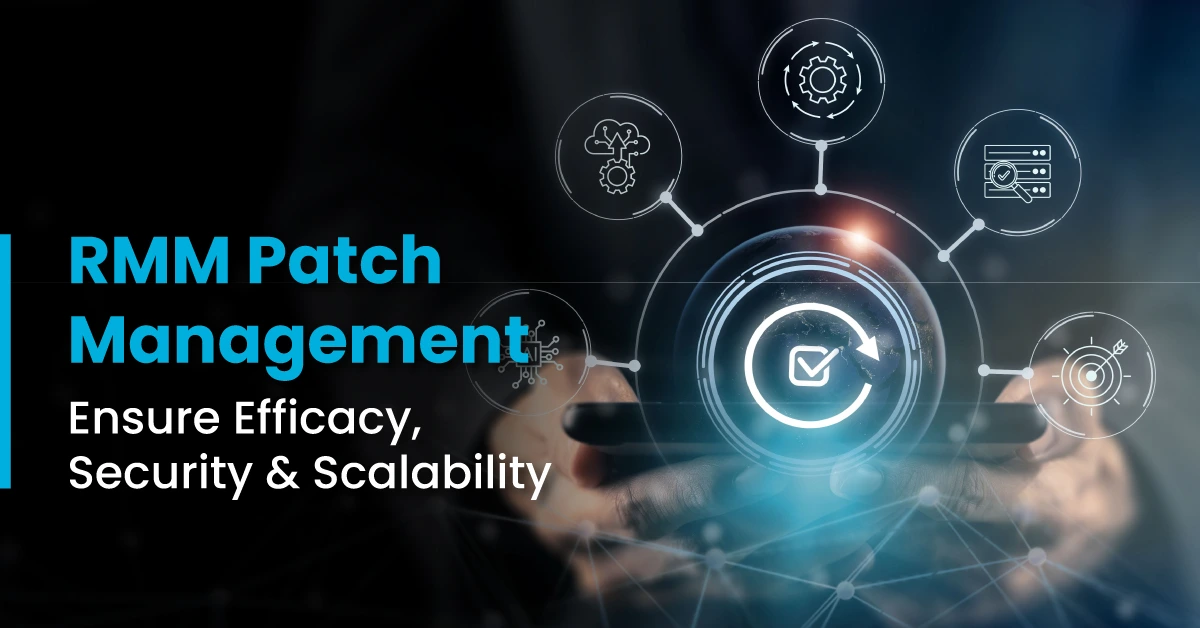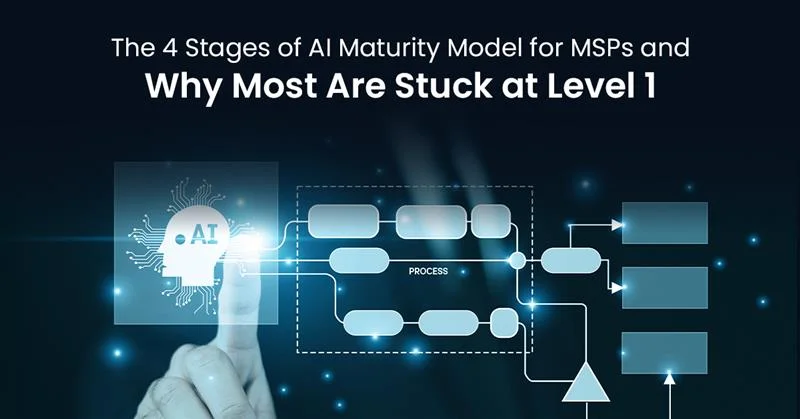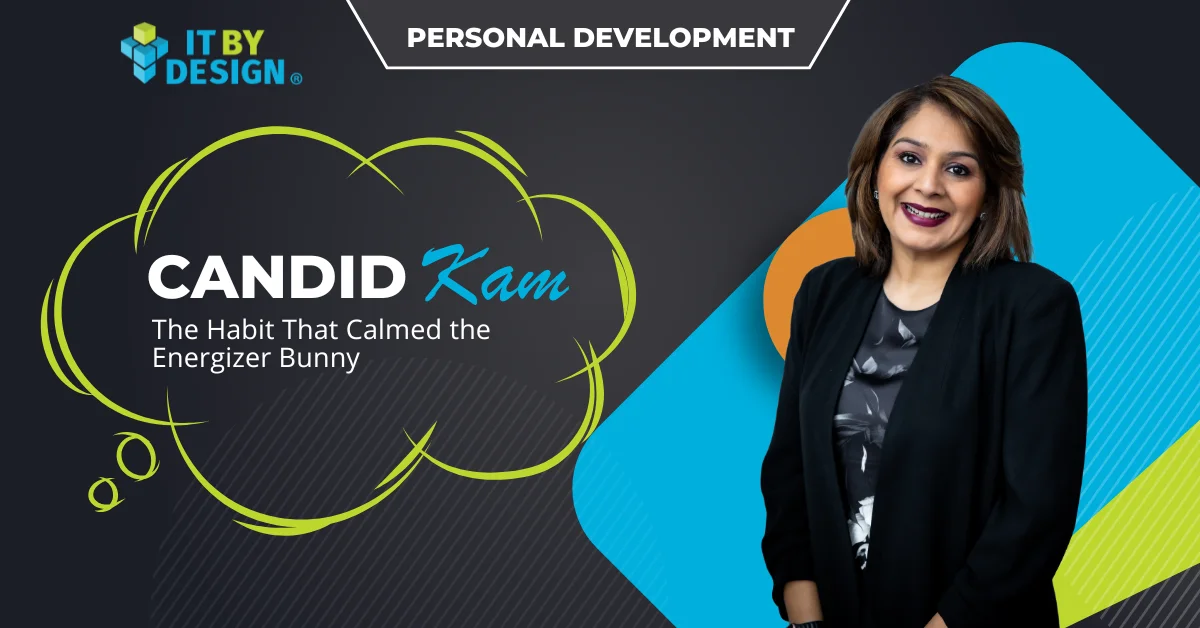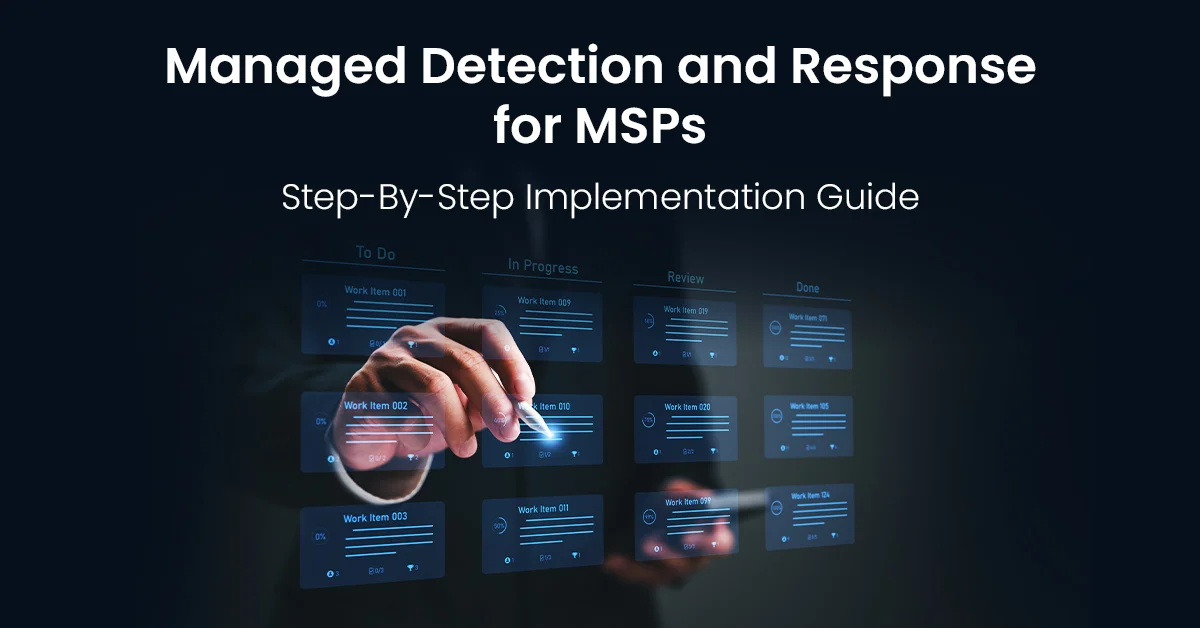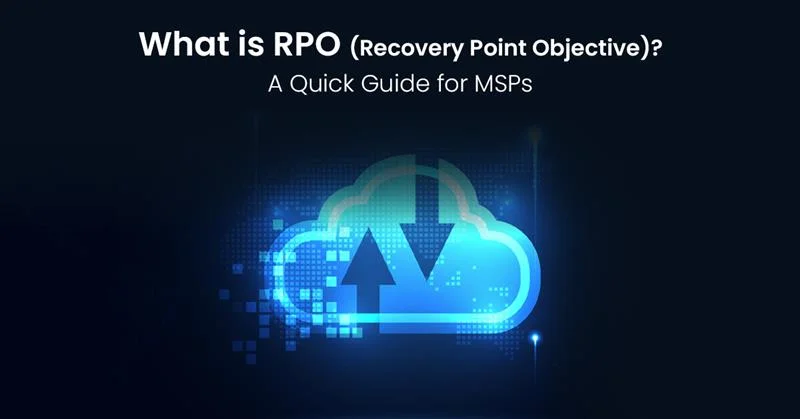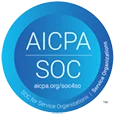IT systems need to be up-to- date and safe for organizations to function properly. Patch management, which is the act of upgrading systems and software to address security flaws, improve performance, and preserve compatibility, is one of the best ways to do this. If you neglect these upgrades, your company may be vulnerable to security risks and technological issues that interfere with day-to-day operations.
Here RMM patch management allows MSPs to monitor, manage, and troubleshoot devices and networks remotely from a centralized console. By automating and streamlining patch administration with the integration of RMM tool enable companies to plan, monitor, and distribute updates across numerous devices from a centralized interface.
In this blog, we explore all the major aspects of RMM patch management. Through this blog, you will have a clear picture of how RMM patch management solutions invaluable for your MSP’s IT team.
Understanding Patch Management
Patch management is most the important aspect for keeping software and systems secure and operational. Regular patching reduces the risk of cyberattacks by fixing vulnerabilities that hackers could exploit. It also helps businesses meet compliance requirements and industry standards.
There are three main types of patches, each serving a specific purpose:
- Security patches: It address flaws that hackers could use against you. Making these updates a priority guards against ransomware and viruses.
- Bug fixes: It improve system efficiency and stability by addressing software bugs or faults that may result in unexpected behaviour or crashes.
- Feature updates: It keep software up-to-date and user-friendly by adding new features or improving current ones. They can enhance user experience and productivity, while they aren’t always necessary.
Effective patch management ensures that systems stay secure, stable, and high performing by applying updates on time and with minimal disruption.
The Role Of RMM in Patch Management
Remote monitoring and management made patch management easier, which include into a larger IT management system. Businesses can manage patching in addition to other crucial IT responsibilities like system monitoring, performance optimization, and security management by using RMM rather than depending on independent solutions for tracking and applying updates.
Automation is one of RMM tools’ greatest advantages. It is no longer necessary for IT personnel to manually find, schedule, and install updates on specific devices thanks to automated patch deployment. The tool handles it, guaranteeing that systems are constantly current without interfering with regular business processes.
Additionally, RMM technologies offer centralized control and monitoring, which simplifies patch management across several devices from a single dashboard. In addition to saving time, this guarantees correct and consistent patch deployment throughout the network.
Scalability is important for MSPs and IT teams managing many devices. Patching across hundreds or even thousands of endpoints can be effectively managed using RMM technologies, which is crucial for expanding companies or service providers overseeing several clients.
RMM technologies help businesses maintain safe, reliable, and effective systems with less human labour and more peace of mind by combining patch management with other IT activities.
Read Also: A Guide to Network Operations Center (NOC)
RMM Patch Management vs. Dedicated Patch Management Solutions
Maintaining the security and modernity of IT systems requires the use of both RMM tools and specialized patch management solutions. Nevertheless, their characteristics, approaches, and applicability vary based on the demands of the organization. To help you grasp the main distinctions, the following comparison chart is provided:
| Aspects | RMM Patch Management | Dedicated Patch Management |
| Feature Focus | Part of a broader IT management system, including monitoring, automation, and reporting. | Specializes solely in patching and updating systems. |
| Integration | Seamlessly integrates with other IT functions, offering centralized control.
|
Can require more effort to integrate with existing systems.
|
| Cost-Effective | Ideal for SMBs and MSPs looking for an all-in-one solution.
|
Can be costlier for small businesses but useful for complex environments.
|
| Automation | Strong automation features for streamlined patch deployment.
|
Often includes advanced automation tailored for granular patching.
|
| Granular Control | Less customizable for patching specifics.
|
Provides more detailed and specific control over patch deployment.
|
| Advantages |
|
|
| Disadvantages |
|
|
Key Features of RMM Patch Management Solutions
RMM patch management solutions are designed to simplify and automate the process of keeping IT systems up to date. Here’s a closer look at their key features:
The goal of RMM patch management solutions is to streamline and automate the process of updating IT systems. Here are some of their salient characteristics:
-
Automated Patching
The capability of RMM solutions to automate patch deployment is one of their most notable characteristics. To prevent interruptions and guarantee that systems are constantly operating on the most recent, secure versions without human involvement, IT teams can plan upgrades during off-peak times.
-
Device Compatibility
Windows, macOS, and even Linux environments are among the many devices and operating systems that RMM products are designed to handle. Businesses can easily handle patching across various device types because to this flexibility, which guarantees constant updates independent of the hardware being used.
-
Reporting and Dashboard
A consolidated dashboard that gives real-time information on patch compliance, update statuses, and failures is provided by RMM solutions. IT teams can promptly detect and resolve problems with the help of these reports, preserving the integrity of the system.
-
Policy Customization
Patching schedules can be customized by businesses to meet their own requirements, making exceptions for crucial systems or applications that requires manual intervention. This degree of personalization guarantees that patching won’t interfere with crucial business processes.
-
Security Improvement
RMM solutions assist in preventing vulnerabilities that hackers can exploit by guaranteeing that fixes are applied promptly. Additionally, automated patching lowers the chance of data breaches by guaranteeing adherence to security best practices.
These features make RMM patch management solutions invaluable for IT teams and MSPs, helping them maintain secure, efficient, and up-to-date systems without the complexity of manual processes.
Best Practices For Optimizing Patch Management With RMM
Effective patch management is key to keeping your IT systems secure and running smoothly. By leveraging the power of RMM tools, businesses can automate updates, reduce vulnerabilities, and maintain compliance. Here’s top 5 best practices for optimizing RMM patch management.
-
Perform routine audits
You can find unpatched systems or software flaws that could be security threats by routinely evaluating your IT infrastructure. To make sure nothing is overlooked, audits can be automated with RMM tools.
-
Test major patches and automate important updates
Without human involvement, automating important security upgrades guarantees that your systems remain safe. It’s preferable to test large changes in a sandbox first as they could affect system performance. Before implementing changes throughout the whole organization, this method assists in identifying possible problems.
-
Establish Equitable Patch Management Guidelines
Patch management procedures that are effective should minimize downtime while putting security first. To prevent interruptions to vital operations, plan upgrades during off-peak times and create patch schedules specifically for important systems.
-
Team training for Proactive Problem Solving
Patch failures can happen even when automation is in place. Teach your IT Team to promptly identify and resolve patch issues. This proactive strategy contributes to the stability and security of the system.
-
Performance Tracking with RMM Dashboards
RMM dashboards offer up-to-date information on performance indicators, compliance, and patch progress. IT professionals can swiftly detect and fix problems by keeping an eye on these dashboards, guaranteeing that upgrades are done regularly and that systems are kept safe.
By adhering to these best practices, companies can use RMM products to simplify patch administration, lower vulnerabilities, and preserve a safe, reliable IT environment.
Why RMM Patch Management is the Preferred Choice for MSPs
To manage IT systems for several clients while upholding security and compliance, MSPs require effective solutions. Because it provides automation, visibility, and simplified processes, RMM patch management is the preferred option.
-
Centralized Administration for Several Customers
From a single, centralized dashboard, MSPs can monitor, manage, and apply fixes for several customers thanks to RMM technologies. This centralization guarantees uniform patch deployment across several networks, streamlines processes, and cuts down on time spent bouncing between environments.
-
Streamlined Adherence to Industry Rules
In sectors including government, healthcare, and finance, maintaining client systems up to date is frequently a compliance obligation. RMM patch management guarantees timely updates and offers reporting capabilities that assist MSPs in proving adherence to security guidelines. This safeguards private information in addition to
-
Scalability and budget-friendly
RMM systems scale easily as MSPs expand and add new customers. Thousands of endpoints can be managed by them without requiring a substantial amount of physical labour. Furthermore, RMM products’ automation capabilities lessen the need for substantial IT manpower, which makes them an affordable option for MSPs of all sizes.
MSPs can provide their clients with safe, effective, and compliant services while maintaining scalable and economical operations by opting for RMM patch management. It’s a clever move for MSPs trying to maintain their competitiveness in the quickly changing IT market.
Conclusion!
Keeping IT systems secure and up to date shouldn’t feel like a never-ending chase. With IT By Design’s RMM patch management, MSPs gain a powerful ally to streamline updates, ensure compliance, and scale effortlessly as client needs grow. It’s not just about managing patches — it’s about delivering peace of mind to businesses that rely on you.
If you are ready to patch smarter, not harder? Let’s connect today for a customized deal suitable for your MSP business.

